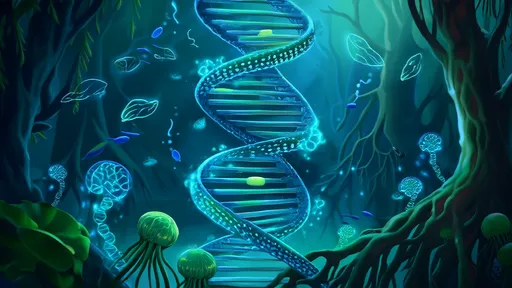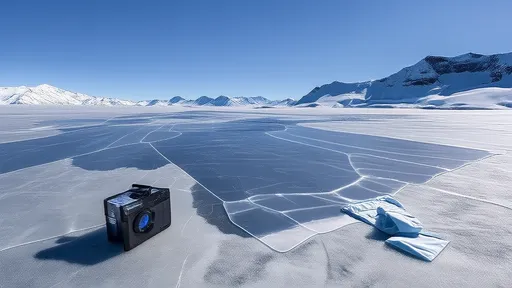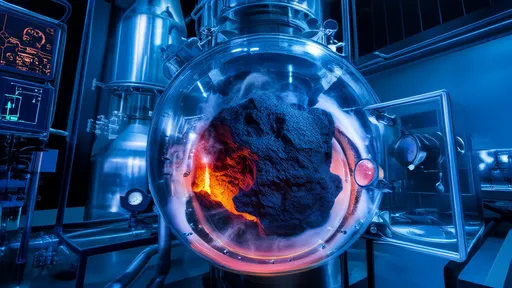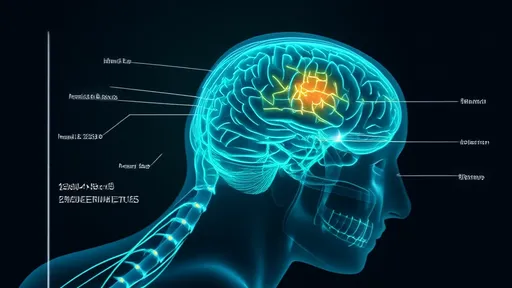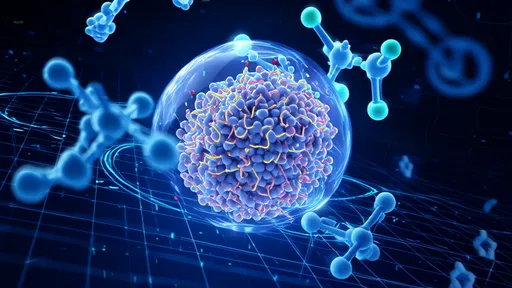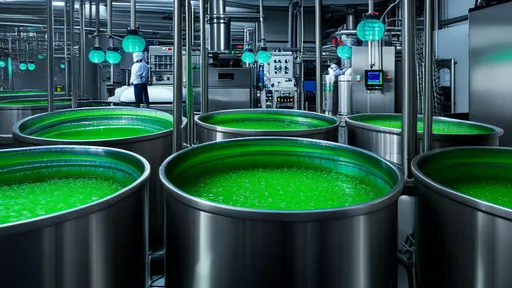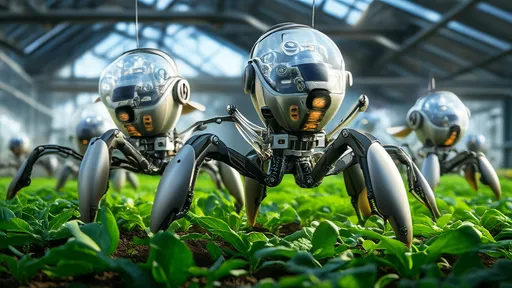The concept of marine cloud brightening through aerosol seeding has emerged as a potential geoengineering strategy to combat global warming. By enhancing the reflectivity of clouds over oceans, scientists aim to increase Earth's albedo, thereby cooling the planet. This approach, while still in experimental stages, has garnered significant attention due to its promise of offsetting some effects of climate change without requiring drastic reductions in greenhouse gas emissions.
At the heart of marine cloud brightening lies the idea of injecting fine sea salt aerosols into low-lying marine stratocumulus clouds. These clouds naturally cover vast areas of the ocean and play a crucial role in reflecting sunlight back into space. The introduction of additional aerosols serves as cloud condensation nuclei, leading to the formation of more numerous but smaller water droplets. This alteration in droplet size distribution enhances the clouds' reflectivity, a phenomenon known as the Twomey effect.
The science behind this process builds upon well-established atmospheric principles. When ships traverse ocean waters, their emissions often leave visible tracks in cloud formations - so-called ship tracks - which demonstrate how aerosol particles can modify cloud properties. Researchers have studied these accidental experiments for decades, providing valuable insights into how intentional aerosol seeding might work on a larger scale.
Several research institutions have begun developing specialized equipment to test marine cloud brightening in controlled settings. These include sprayer systems capable of producing seawater aerosols of precise sizes at sufficient quantities to potentially influence cloud formation. Field experiments remain limited and small-scale due to both technical challenges and ongoing debates about the ethics and potential side effects of geoengineering.
One of the key advantages of marine cloud brightening is its theoretical reversibility. Unlike some other geoengineering proposals that involve long-lasting atmospheric changes, aerosol seeding effects would diminish quickly if spraying were discontinued. This characteristic makes the approach particularly attractive to scientists cautious about committing to irreversible climate interventions.
However, significant uncertainties remain regarding the regional and global impacts of widespread implementation. Climate models suggest that while marine cloud brightening could effectively cool certain ocean regions, it might inadvertently alter precipitation patterns elsewhere. The potential disruption to monsoons or other critical weather systems raises serious concerns about unintended consequences for agriculture and water supplies in vulnerable regions.
The ethical dimension of geoengineering poses another complex challenge. Decisions about whether and how to implement marine cloud brightening would require unprecedented international cooperation and governance structures. Developing nations, often most vulnerable to climate change impacts, might have different perspectives on risk tolerance compared to industrialized countries advocating for such solutions.
From a technical standpoint, scaling up from small experiments to meaningful climate impact presents enormous hurdles. The logistics of operating fleets of aerosol-spraying vessels across ocean basins, maintaining equipment in harsh marine environments, and ensuring consistent aerosol production all demand innovative engineering solutions. Some estimates suggest that affecting global temperatures by even half a degree Celsius would require spraying systems operating continuously across thousands of kilometers of ocean.
Despite these challenges, proponents argue that research should continue given the accelerating pace of climate change. They emphasize that marine cloud brightening might serve as a temporary measure to "buy time" while societies transition to low-carbon economies. The technology could potentially help prevent climate tipping points or provide emergency cooling in case of catastrophic warming scenarios.
Critics counter that focusing on geoengineering solutions risks diverting attention and resources from essential mitigation efforts. There's concern that the mere prospect of technological fixes might reduce political and public urgency to address root causes of climate change through emissions reductions. This moral hazard argument suggests that geoengineering research could inadvertently undermine climate action.
The scientific community remains divided on how aggressively to pursue marine cloud brightening research. Some advocate for cautious laboratory and modeling studies to better understand potential impacts, while others call for more substantial field trials to evaluate real-world effectiveness. International scientific organizations have begun developing frameworks for responsible research governance, but consensus on appropriate boundaries remains elusive.
As research progresses, transparency and public engagement will become increasingly important. The idea of deliberately manipulating Earth's atmosphere raises profound questions about humanity's relationship with nature and our responsibility as planetary stewards. These philosophical considerations, combined with complex scientific and political factors, ensure that marine cloud brightening will remain a contentious topic in climate discussions for years to come.
Looking ahead, the coming decade will likely see intensified research efforts and more sophisticated modeling studies. Whether marine cloud brightening transitions from theoretical concept to practical climate tool will depend on resolving technical challenges, establishing governance mechanisms, and achieving broader societal acceptance. In the context of escalating climate emergencies, the world may need to make difficult decisions about such interventions sooner than anticipated.
The rhythmic lapping of brackish water against tangled mangrove roots conceals one of nature's most extraordinary genetic survival stories. For centuries, these salt-tolerant trees have guarded molecular secrets in their DNA that allow them to thrive where other plants perish. Today, scientists are cracking open this genetic vault through an ambitious international initiative called the Mangrove Gene Bank Project, with groundbreaking implications for global food security.
In the face of accelerating glacial melt due to climate change, scientists and engineers are turning to innovative solutions to slow the disappearance of these critical ice reserves. One such breakthrough is the development of high-albedo fabric covers, colloquially termed "glacial nanoblankets," designed to reflect sunlight and reduce ice ablation. These advanced textiles are emerging as a promising tool in the fight against rising sea levels and ecosystem disruption.
In the race to mitigate climate change, scientists and engineers are turning to the Earth’s own geological processes for solutions. One of the most promising avenues is basalt carbon mineralization, a natural chemical reaction that locks away carbon dioxide in solid rock. This process, often described as nature’s own carbon capture and storage (CCS) system, is now being harnessed and accelerated to combat rising atmospheric CO₂ levels. Unlike traditional carbon storage methods, which rely on fragile seals and uncertain long-term stability, basalt mineralization offers a permanent and geologically secure solution.
The concept of marine cloud brightening through aerosol seeding has emerged as a potential geoengineering strategy to combat global warming. By enhancing the reflectivity of clouds over oceans, scientists aim to increase Earth's albedo, thereby cooling the planet. This approach, while still in experimental stages, has garnered significant attention due to its promise of offsetting some effects of climate change without requiring drastic reductions in greenhouse gas emissions.
For decades, the study of chronic pain has been hampered by the inability to observe neural activity over extended periods. Traditional imaging techniques provide snapshots of brain activity but fail to capture the dynamic, evolving nature of pain processing. A groundbreaking approach using transparent skull implants is now revolutionizing our understanding of how chronic pain manifests and persists in the brain.
In the perpetual darkness of the deep sea, hydrothermal vents spew superheated, mineral-rich fluids into the frigid water, creating oases of extreme chemistry that have fascinated scientists for decades. These underwater geysers, often located along mid-ocean ridges, host complex reactions that may hold clues to the origins of life and the formation of mineral deposits. Until recently, studying these dynamic systems in their natural state posed immense challenges—until the advent of deep-sea chemical robots capable of in situ monitoring.
In a groundbreaking development that merges cutting-edge physics with ancient archaeology, researchers have successfully utilized neutron holography to reveal hidden inscriptions beneath the patina of bronze artifacts. This non-invasive technique promises to revolutionize the study of corroded metal objects, offering unprecedented access to historical texts without damaging delicate surfaces.
The advent of cryo-electron microscopy (cryo-EM) coupled with artificial intelligence (AI) has revolutionized the field of structural biology. By capturing the intricate dance of proteins in their native states, scientists are now able to unravel the dynamic architectures that govern cellular functions. This powerful synergy between cutting-edge imaging and machine learning is not just a technological leap—it’s a paradigm shift in understanding life at the molecular level.
The world of ultrafast spectroscopy has entered a revolutionary phase with the advent of attosecond spectral knives—a cutting-edge tool that enables scientists to selectively excite specific vibrational states in molecules. This breakthrough technology is reshaping our understanding of molecular dynamics and opening new frontiers in chemical reaction control. Unlike conventional methods that often excite molecules indiscriminately, attosecond spectral knives offer unprecedented precision by targeting individual quantum states with laser pulses lasting mere billionths of a billionth of a second.
The global food system is undergoing a quiet revolution, one fermentation tank at a time. In laboratories and production facilities around the world, scientists and entrepreneurs are harnessing the power of microalgae to create what many believe could become the protein source of the future. These microscopic photosynthetic organisms, grown in controlled fermentation environments, are demonstrating remarkable potential to address some of our most pressing nutritional and environmental challenges.
The agricultural sector is undergoing a quiet revolution as artificial intelligence merges with robotics to address one of nature's most vital processes: pollination. In fields across the world, experimental deployments of mechanical pollinator swarms are demonstrating how AI-driven vision systems can collaborate to mimic—and potentially enhance—the work of vanishing bee populations. These autonomous systems represent not just a technological breakthrough, but a necessary adaptation to ecological instability.
For decades, farmers and land reclamation specialists have struggled with the persistent challenge of saline-alkali soils - those unproductive lands where high salt concentrations and alkaline pH levels stunt plant growth and render vast areas agriculturally useless. Traditional remediation methods often proved either too slow, too expensive, or too water-intensive to implement at scale. Now, an innovative electrochemical approach using pulsed electric fields is demonstrating remarkable potential to transform these barren landscapes into fertile ground.
In the rolling hills of Colombia's coffee belt, a quiet revolution is taking place beneath the emerald canopies of coffee plants. Researchers are conducting groundbreaking field trials with genetically edited coffee plants designed to grow beans naturally low in caffeine. This ambitious project could forever change how the world consumes its most popular psychoactive beverage.
For centuries, the intricate world beneath our feet remained largely a mystery. Farmers, ecologists, and biologists could only speculate about the complex interactions between plant roots and soil structure. Traditional methods of studying root systems involved destructive sampling—digging up plants and washing away soil to examine roots. This approach not only killed the plants but also disrupted the very soil architecture researchers sought to understand. However, a quiet revolution in agricultural science is changing everything.
The concept of piezoelectric railways is revolutionizing the way we think about sustainable energy in transportation. By converting the mechanical energy from train-induced vibrations into electrical power, these systems offer a promising solution for reducing dependency on external power sources. The technology leverages piezoelectric materials, which generate electricity when subjected to mechanical stress, embedding them directly into railway tracks. This innovation not only enhances energy efficiency but also aligns with global efforts to combat climate change by minimizing carbon footprints.
